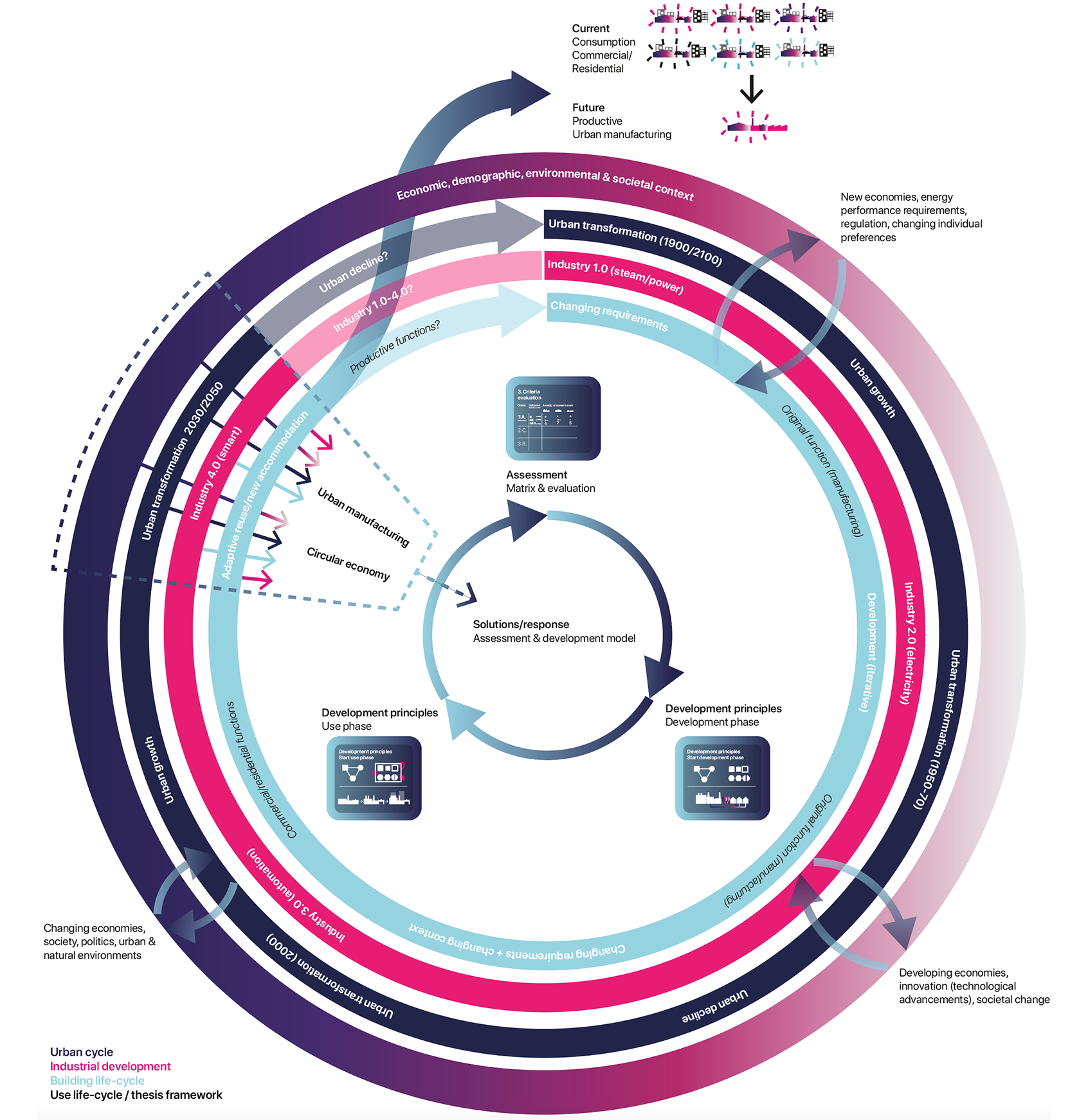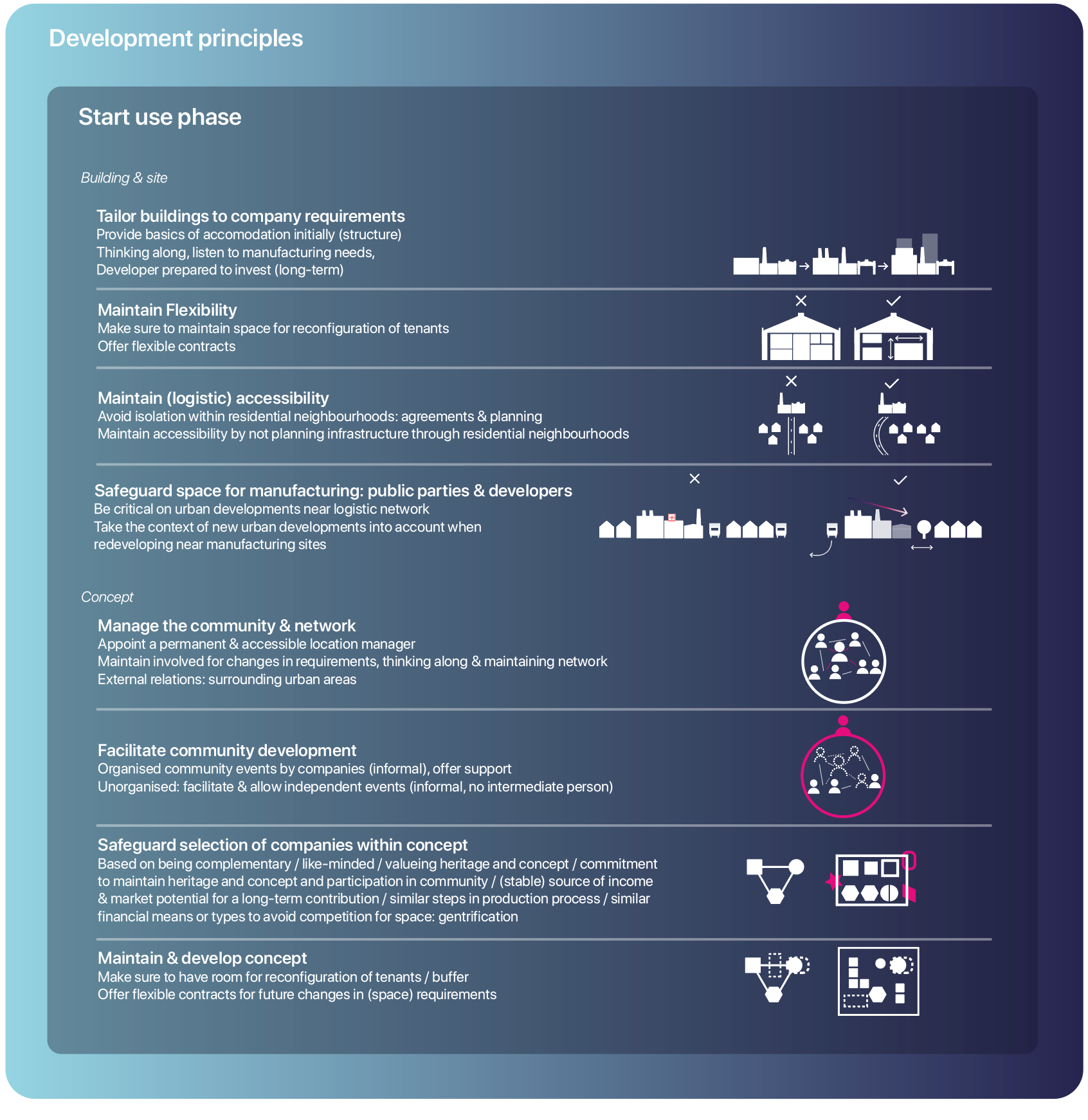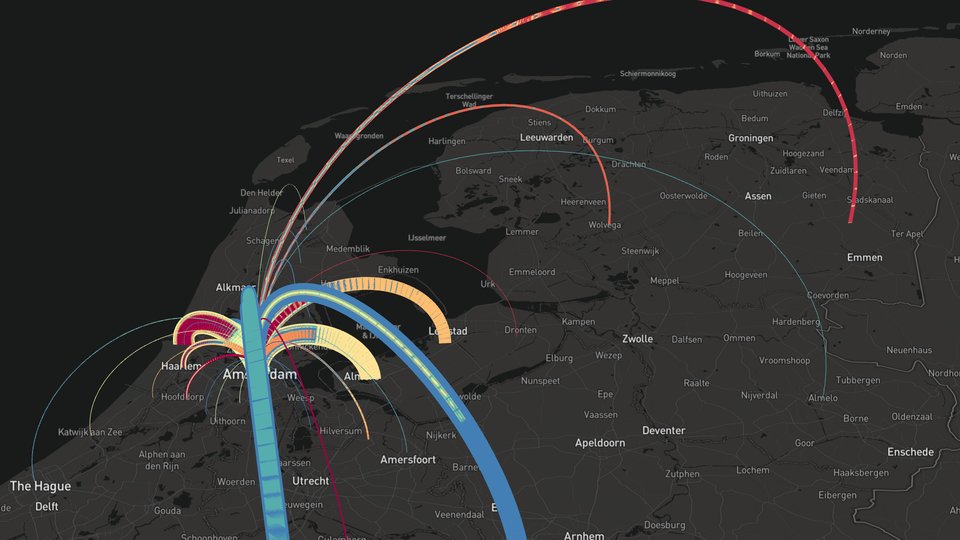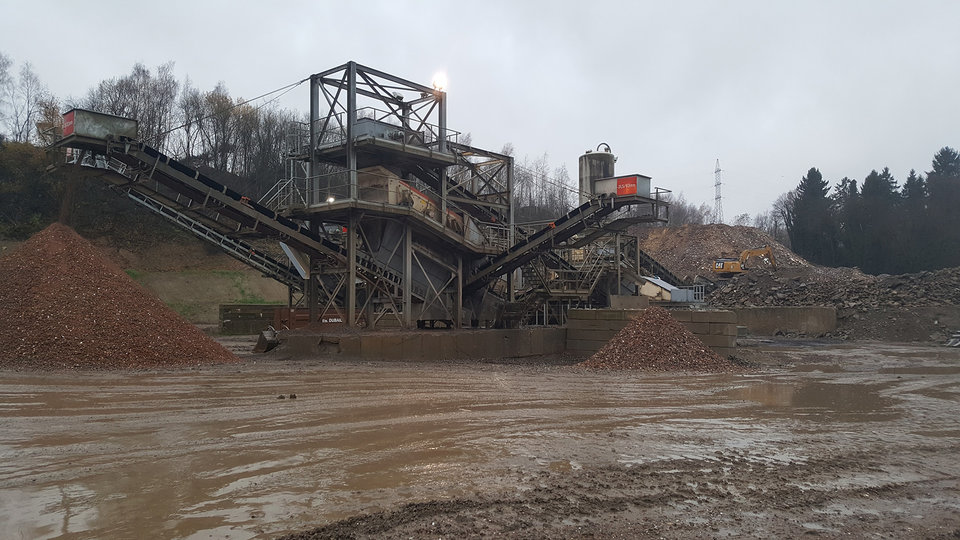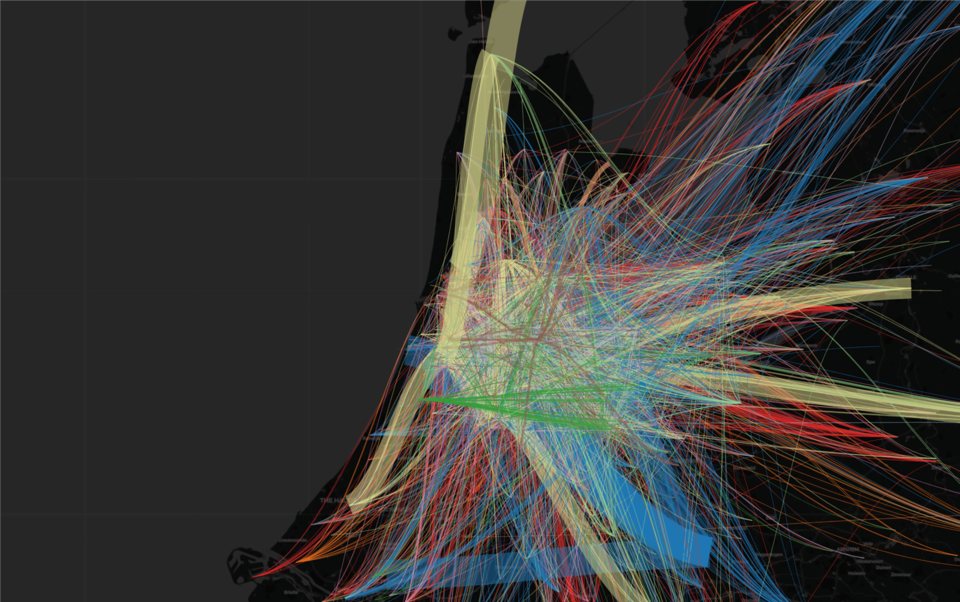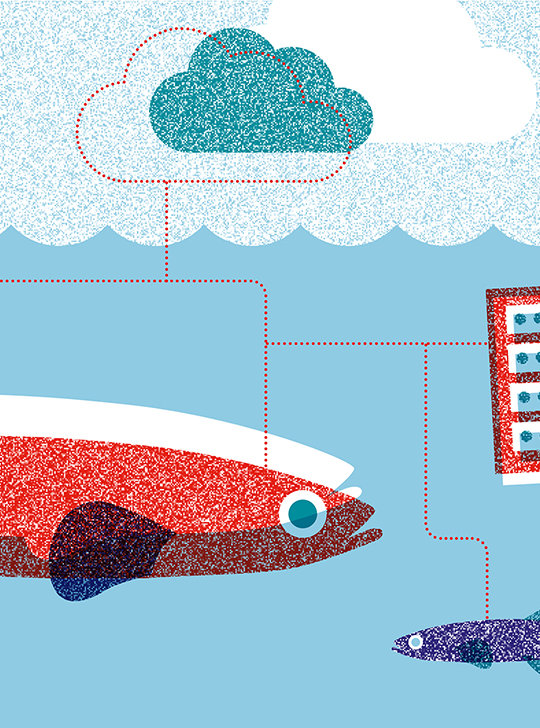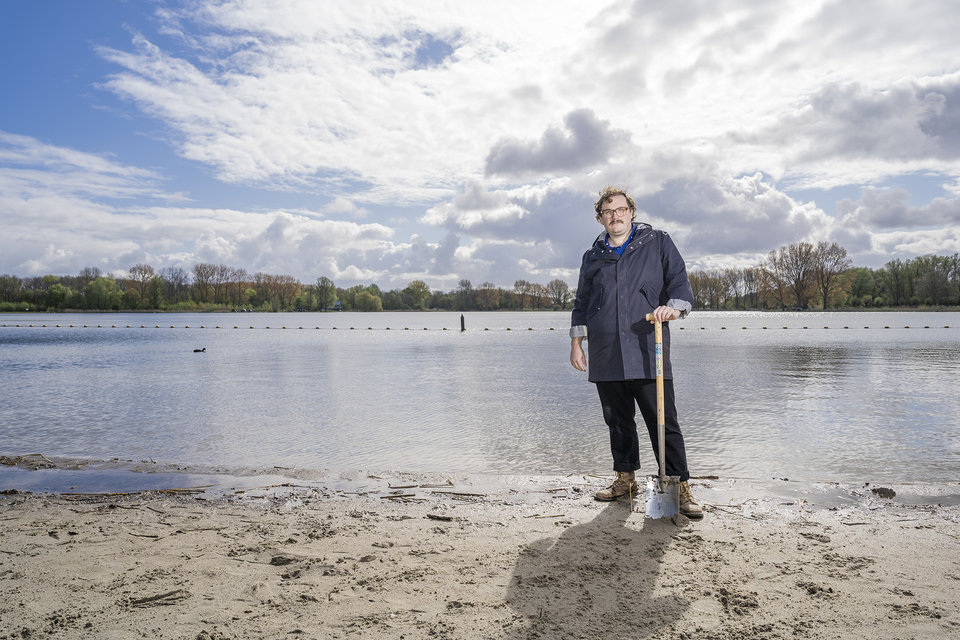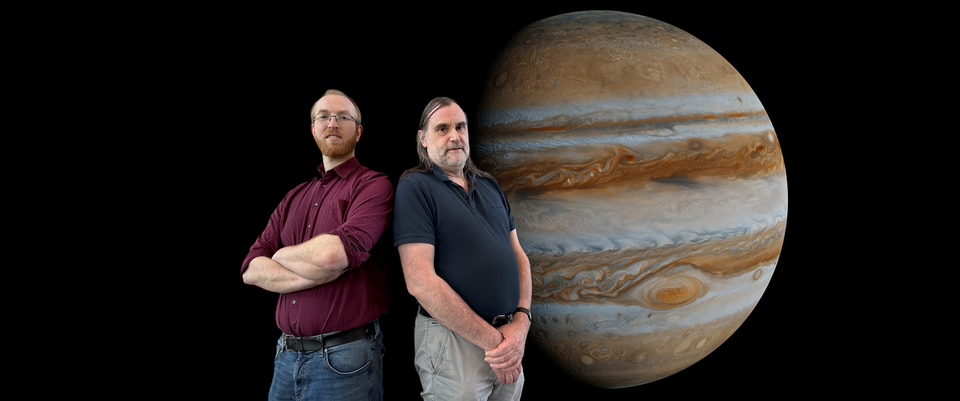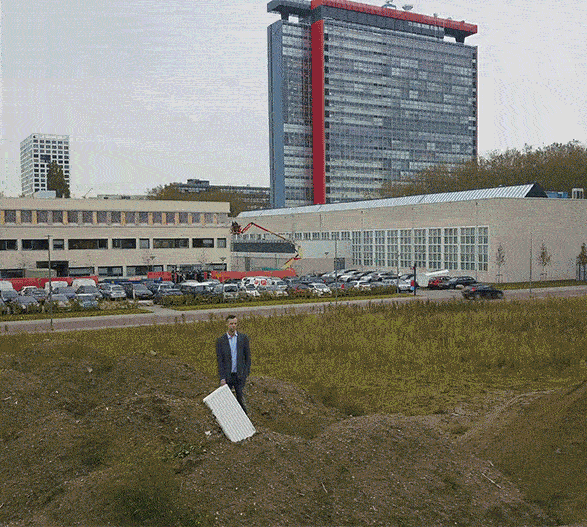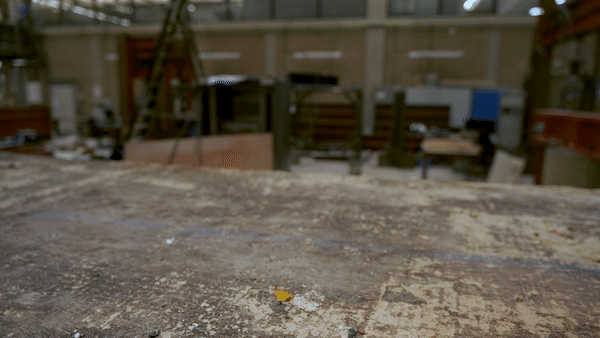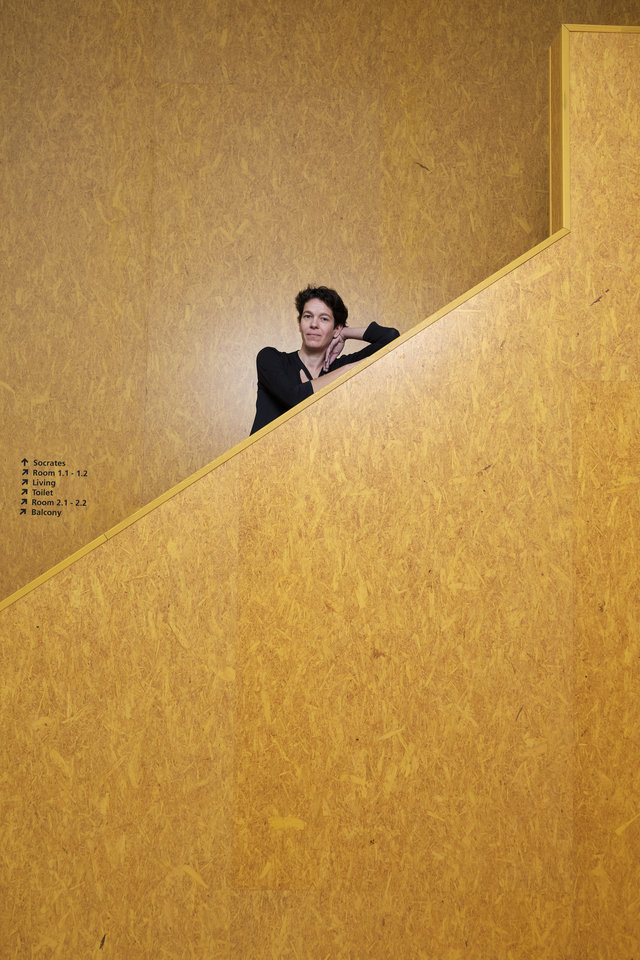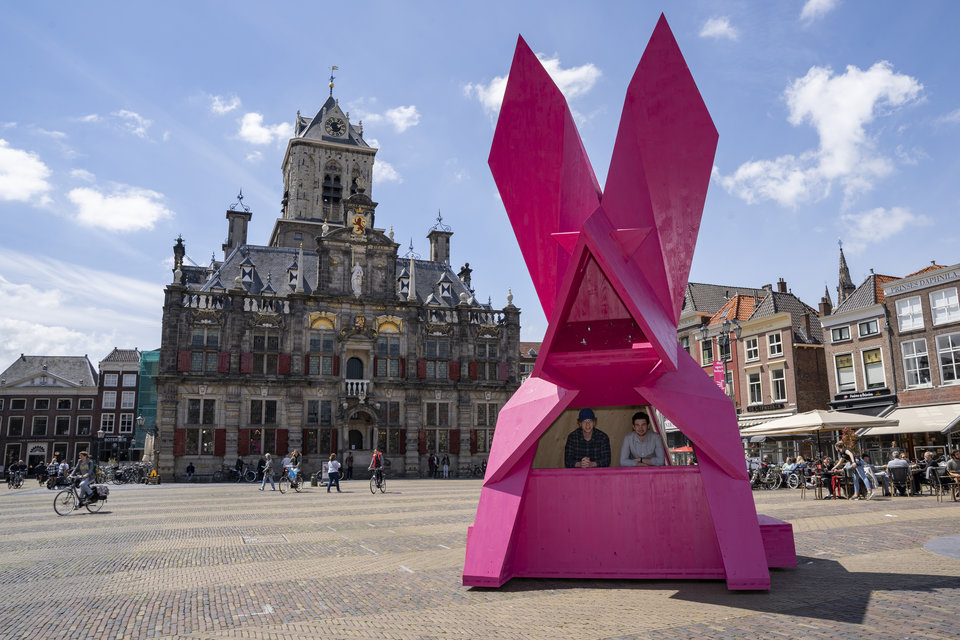Under what conditions can old industrial buildings in cities offer space for contemporary industry and help prepare for and facilitate a circular economy? Master's student Christiaan Hanse went in search of answers and came up with a strategic assessment framework.
As part of his master's degree in Urbanism, Christiaan delved into design and planning strategies for a circularly operating border region. A second master's degree in Management in the Built Environment culminated in research into the return and preservation of the industrial function of industrial heritage. "How can you continue to use historically interesting and socially valuable buildings over time? I think that's an interesting question."
A pivotal role
Vacancy poses a genuine risk when original industry moves or disappears. Redevelopment often focuses on housing, says Christiaan. "A site is then transformed into a trendy neighbourhood with flats and coffee shops." Buildings are demolished or lose their original function. Infrastructure disappears. "As a result, valuable production facilities and employment opportunities will be lost, and the pivotal role of those buildings and sites in local and regional trade will also disappear. Space for industrial activity is drastically curtailed." While for circular activity to develop, raw materials, other materials and products need to be able to make their way from supplier or recycler to maker to the sales market and then from consumer back to recycler. "The shorter and more direct the lines, the better."
The shorter and more direct the lines, the better.
Preserving the industrial function of buildings and infrastructure thus seems advisable. "Reuse of real estate is already a form of circular development. I researched which type of business activity pairs well with transformed industrial heritage and why." For Christiaan, 'built industrial heritage' is a broad concept. "For me, it's mainly about the iconic value. In my overview of examples, a building representative of a particular industry that has only been there for 40 years is just as relevant as a listed monument from the 19th century."
Eindhoven and Rotterdam
Which location factors play a role in industrial entrepreneurs' choice of (transformed) heritage? Christiaan consulted the literature and listed 31 factors, from land price to proximity to green space and urban amenities. "Both creative and high-tech companies like to locate in the city. Ever-advancing technology has reduced the pollution and nuisance caused by certain industrial processes, making such types of business better suited to an urban location."
He devised an integrated assessment framework to determine how high the various location factors score. "I distinguish three scales: the creative pioneer, the operational startup or scale-up, and the mature manufacturing company." The framework shows how the three business types relate to each of the 31 location factors. For example, proximity to skilled staff scores higher for a mature company than for a pioneer while the reverse is true for proximity to raw materials. He also distilled 'development principles' – basically a set of advice – for both the development and use phases of industrial heritage, transformed or otherwise.
Christaan then tested his two-part instrument in case studies at two locations: the Strijp-T site in Eindhoven, a former Philips industrial site, and the Makers District in Rotterdam. He interviewed entrepreneurs, site managers and developers. For entrepreneurs in Eindhoven, for example, the site’s appearance and its proximity to various amenities proved to be important considerations for locating there. "The assessment framework seems to be pretty accurate. This is also reflected in the interviews I subsequently conducted with experts inside and outside this faculty, to validate outcomes."
A useful tool
Although he would first like to test them in more cases, Christiaan thinks his assessment framework and development principles could be a useful tool for developers and policymakers, among others: in fact, for all parties who want to determine a strategy for the transformation of obsolete urban industrial heritage into space for business activity geared towards a circular urban economy. "The research nicely combines my fascination with industrial heritage and the knowledge I’ve gained from urban design and area development. I really hope to bring something new to the table about a socially relevant topic."
This story is published: March 2024
More information
The complete thesis is available through this link:
Christiaan Hanse graduated under the supervision of Hilde Remøy and Karel Van den Berghe.
Image credits portrait photo Christiaan Hanse: Brink
Circularity in the Built Environment Graduation Awards
Christiaan Hanse is one of the five winners of the Circularity in the Built Environment Graduation Awards 2022-2023. With his graduation project he was elected winner in the category 'Management & Policy'.
The Circularity in the Built Environment Graduation Awards recognise the contribution BK graduation students make to the transition toward a circular built environment. These annual awards aim to stimulate research and innovation in the field of circularity in the built environment.
The Circularity in the Built Environment Graduation Awards is an initiative of the Circular Built Environment Hub of the Faculty of Architecture and the Built Environment, TU Delft.
Read also the stories of the other four winners.

Christiaan Hanse
Winner Circularity in the Built Environment Graduation Awards 2022-2023 in the category 'Management & Policy'.


